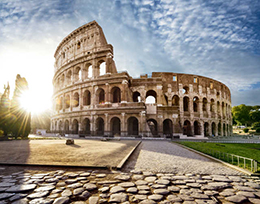
An Italy Long-Stay Visa is also known as a D-Visa or a National Visa. This is the type of visa you have to apply for if you want to stay in Italy longer than 90 days. However, a long-stay visa isn’t the only permission you need if you want to live in Italy.
With an Italian long-stay visa, you can enter Italy. After that, you have to get your Italian residence permit, which is what authorizes you to stay in Italy for longer than 90 days. You cannot apply for an Italian residence permit if you are in Italy with a short-stay visa (Schengen).
The type of Italy long-stay visa that you apply for depends on the purpose you want to live in Italy for. So, if you want to go to Italy to study, work, or join a family member, you have to apply for the respective visa.
The most common types of Italian long-stay visas are:
- The Italy Work Visa – available to foreign nationals who want to move to Italy to engage in salaried work. You already need to have a job in Italy before you can apply.
- The Italy Study Visa – which students over 18 who are already enrolled in an Italian educational institution can apply for.
- The Italy Family Visa – which is available to foreign nationals who want to join a family member who has Italian citizenship or an Italian permanent residence permit.
- The Italy Self-Employed Visa – which is available to entrepreneurs who wish to open a business or self-employed individuals wanting to work in Italy.
- The Italy Working Holiday Visa – which is a type of visa available only to nationals aged 18-30 from countries who are part of a working holiday program along with Italy.
- Italian Retirement Visa – which is available to those persons who can financially support themselves without working in Italy.
Who needs an Italy Long-Stay Visa?
Almost everyone needs an Italy long-stay visa, even the non-Schengen and non-EU nationals who are exempt from an Italy Schengen visa.
So, you need to apply for an Italy long-stay visa unless you are from:
- An EU member state
- Iceland
- Liechtenstein
- Norway
- Switzerland
How to apply for an Italy Long-Stay Visa?
You must apply for the Italy long-stay visa at the adequate location which is in charge of handling visa applications in your country. This could be one of the following:
- Italian Representation (such as an Italian embassy or consulate).
- A Visa Application Center which Italy has outsourced visa applications to, such as VFS Global, COX and Kings, or TLS International.
- The Representation of another Schengen country which Italy has outsourced visa applications to (if there is no Italian Representation in your country).
After determining where you should submit your application, you have to:
- Book an appointment.
- Download and complete the Italy Long-Stay Visa Application Form.
- Gather all the necessary documents that are needed to support your application.
- On the date of your appointment, submit the documents and the application form in person.
- Pay the Italy visa processing fee. The fee changes depending on the type of visa you are applying for. It is non-refundable even if you do not receive a visa.
The application process changes slightly based on the type of Italy long-stay visa you are applying for. (See the types of Italy long-stay visas above).
For a complete guide to the Italy visa application process click here.
What are the requirements for an Italy Long-Stay Visa?
The documents that are needed to support an Italy long-stay visa application change based on your purpose of travel as well as your country. Different countries may require specific, additional documents. Further, depending on the type of visa you apply for, you may need authorization from competent Italian authorities. (See the types of Italy long-stay visas listed above.)
However, there is a set of standard documents everyone must have, such as:
- A long-stay visa application form, completed, dated, and signed.
- Two passport pictures in line with Schengen requirements.
- Valid passport/travel documents with at least two blank pages. It must have been issued in the past ten years and be valid for another three months after you intend to leave Italy.
- Photocopies of your passport’s bio-data pages as well as all previous visas.
- Health insurance of at least €30,000, covering all possible arising medical emergencies.
- Civic documents, such as birth certificates, marriage certificates, etc.
- Paid visa fee, which changes depending on your purpose of travel.
The Italian visa application center or representation in which you apply will provide information regarding any specific documents that you need.
After you enter Italy
After you enter Italy with a long-stay visa, you have 8 days to approach the Italian authorities and request a residence permit (permesso di soggiorno) which is what authorizes you to stay in Italy long-term.
The length of time that a residence permit is issued depends on the type of Italy long-stay visa that you have applied for.
Even EU nationals who do not need a visa have to declare their presence with the local authorities in Italy if they wish to stay in the country for more than 90 days. The same applies to the family members of Italian citizens (spouse, legal partner, child, or parent), though they do need an Italy long-stay visa beforehand if visa requirements apply.
